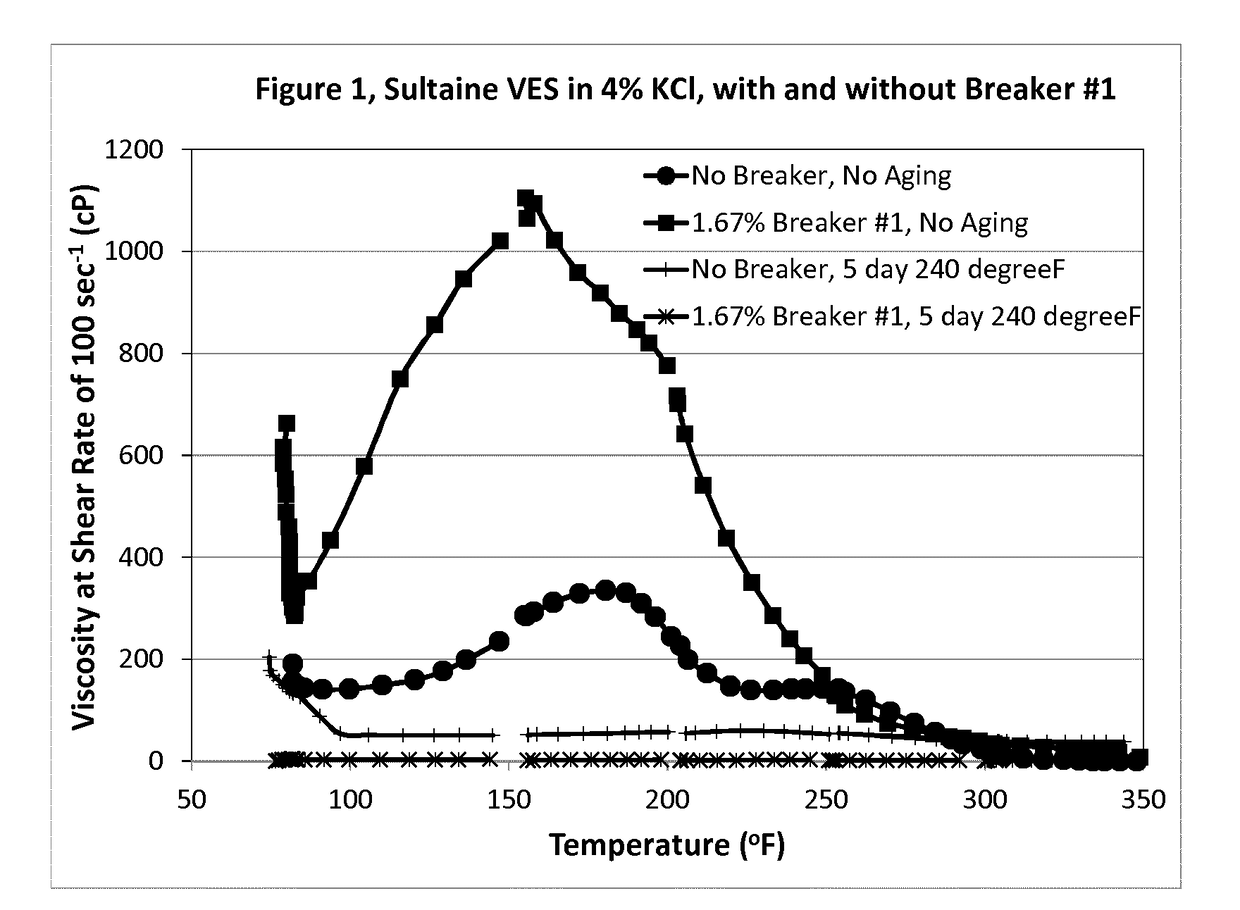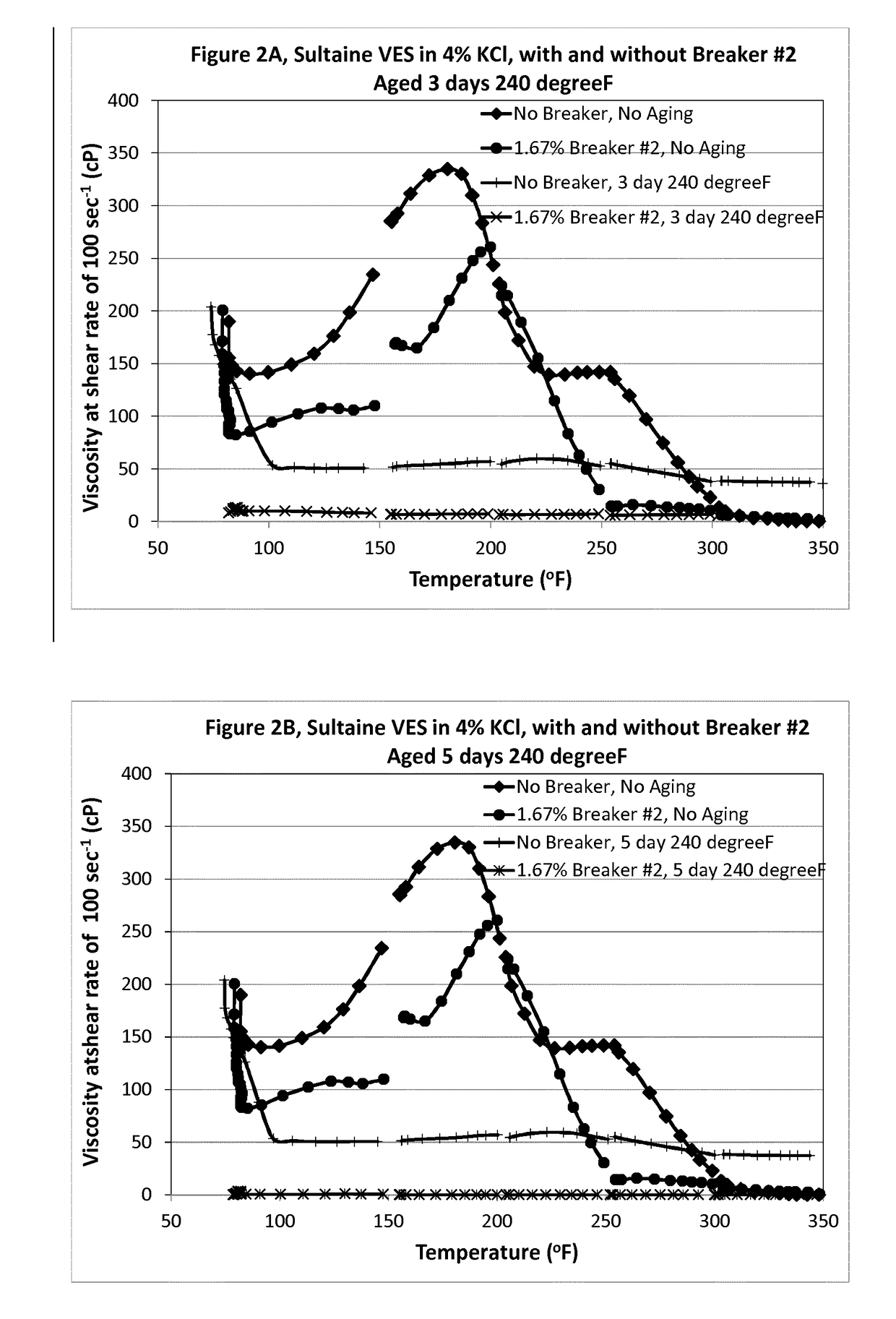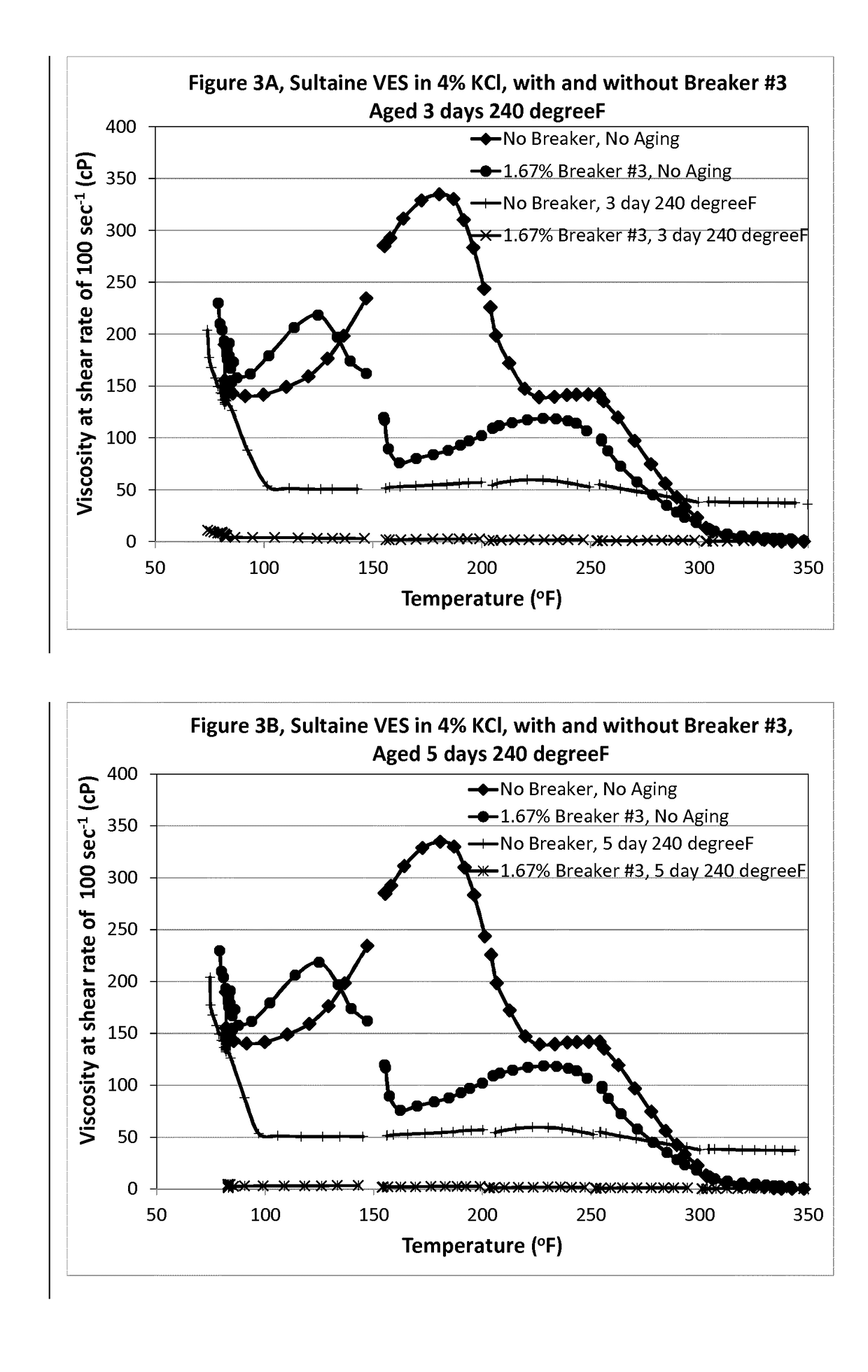Internal Polymeric Breaker for Viscoelastic Surfactant-Based Fluids
a technology of viscoelastic surfactant and interpolymer breaker, which is applied in the direction of fluid removal, cleaning apparatus, borehole/well accessories, etc., can solve the problems of limited interaction with the gel, impede the recovery of desired subterranean oil or gas, and difficult removal, so as to improve oil production, reduce fluid leakage, and high permeability
- Summary
- Abstract
- Description
- Claims
- Application Information
AI Technical Summary
Benefits of technology
Problems solved by technology
Method used
Image
Examples
example 1
[0120]Example 1 was run on the samples of 6% Sultaine VES in 4% KCl brine, with and without 1.67% HASE polymer breaker #1. The viscosity of the non-aged sample with 1.67% breaker #1 was significantly higher than the viscosity of the non-aged sample without breaker. After aging for 5 days at 240° F., the sample with 1.67% breaker #1 showed almost zero viscosity, indicating a complete breaking of the gel viscosity, and its viscosity was lower than the viscosity of the sample without breaker.
example 2
[0121]Example 2 was run on the samples of 6% Sultaine VES in 4% KCl brine, with and without 1.67% HASE polymer breaker #2. The viscosity of the non-aged sample with 1.67% breaker #2 was lower than the viscosity of the non-aged sample without breaker. After the samples were aged for 3 days (FIG. 2A) and 5 days (FIG. 2B) at 240° F., the samples with 1.67% breaker #2 showed almost zero viscosity and had lower viscosities than the samples without breaker.
example 3
[0122]Example 3 was run on the samples of 6% Sultaine VES in 4% KCl brine, with and without 1.67% HASE polymer breaker #3. The viscosity of the non-aged sample with 1.67% breaker #3 was lower than the viscosity of the non-aged sample without breaker. After the samples were aged for 3 days (FIG. 3A) and 5 days (FIG. 3B) at 240° F., the samples with 1.67% breaker #3 showed almost zero viscosity and had lower viscosities than the samples without breaker.
PUM
 Login to View More
Login to View More Abstract
Description
Claims
Application Information
 Login to View More
Login to View More - R&D
- Intellectual Property
- Life Sciences
- Materials
- Tech Scout
- Unparalleled Data Quality
- Higher Quality Content
- 60% Fewer Hallucinations
Browse by: Latest US Patents, China's latest patents, Technical Efficacy Thesaurus, Application Domain, Technology Topic, Popular Technical Reports.
© 2025 PatSnap. All rights reserved.Legal|Privacy policy|Modern Slavery Act Transparency Statement|Sitemap|About US| Contact US: help@patsnap.com



